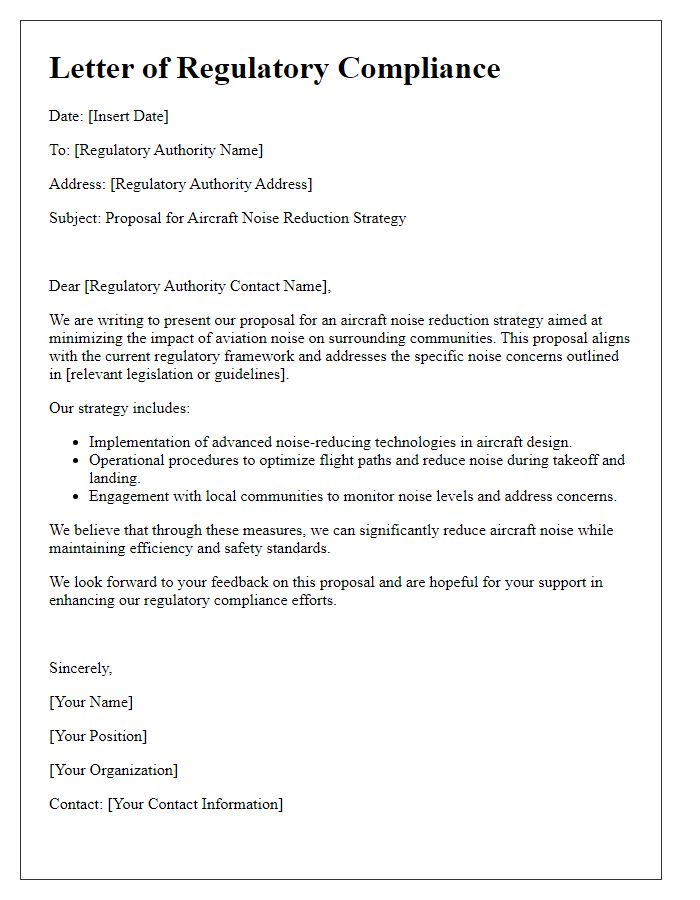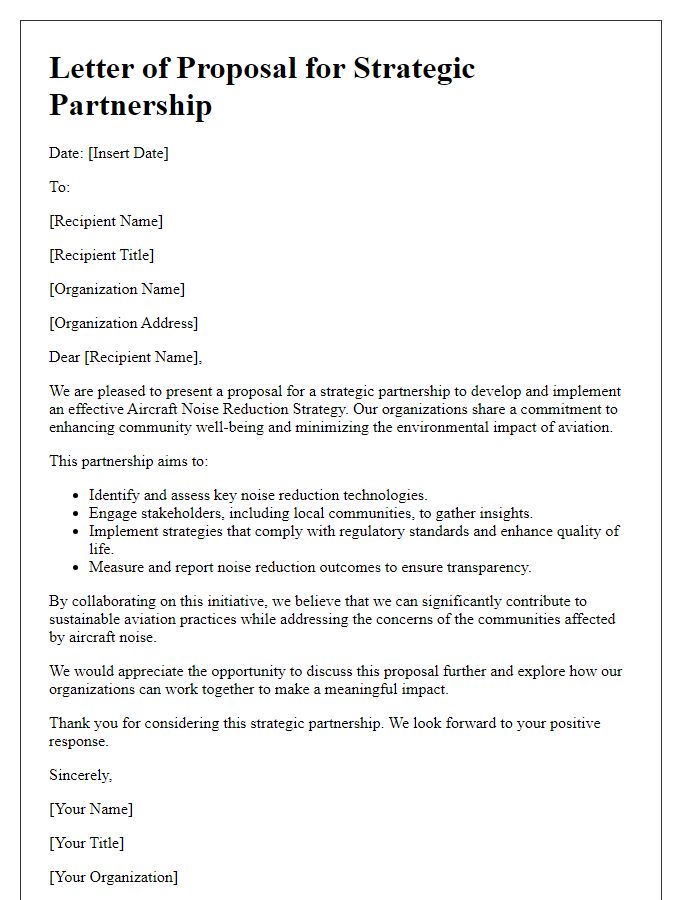Are you tired of the constant hum of aircraft flying overhead? You're not alone; many communities are seeking solutions to reduce the noise that disrupts our daily lives. In this article, we'll explore a comprehensive aircraft noise reduction strategy proposal that aims to create a more peaceful environment for residents. Join us as we dive into the various approaches and innovative ideas that could make a significant difference in your neighborhood.

Community Impact Assessment
Aircraft noise reduction strategies are crucial for enhancing the quality of life in communities situated near airports, such as those near Los Angeles International Airport (LAX) and Heathrow Airport in London. These strategies should include analysis of noise levels measured in decibels (dB) during key operational hours, particularly during early morning and late evening. Noise contours can depict areas most affected, often extending beyond a two-mile radius from runways. Community engagement events, such as public hearings and workshops, allow residents to voice concerns regarding noise pollution, particularly in neighborhoods like El Segundo and Hammersmith. Environmental impacts must evaluate long-term health implications, such as sleep disturbances and increased stress levels linked to consistent exposure to aircraft noise. Additionally, performance metrics should consider the effectiveness of implemented noise barriers and flight path modifications in providing relief to affected populations.
Noise Mitigation Technologies
The implementation of advanced Noise Mitigation Technologies in airports can significantly enhance the quality of life for residents living near flight paths. Utilizing sound barriers, such as noise walls made of specialized materials, can reduce the impact of aircraft noise, potentially lowering decibel levels by up to 10 dB(A) in residential areas. Additionally, the integration of quieter aircraft models, such as the Boeing 787 Dreamliner, equipped with quieter engines and soundproofing improvements, can further alleviate disturbances. Innovations like Continuous Descent Approaches (CDA) allow aircraft to reduce engine thrust more efficiently during landing, minimizing noise pollution at critical times. Moreover, community engagement initiatives, such as noise complaint hotlines and regular meetings, can foster collaboration between airport authorities and residents, ensuring effective communication and response strategies. Implementing these noise mitigation strategies can lead to a harmonious coexistence between aviation operations and community well-being.
Regulatory Compliance and Standards
Aircraft noise reduction strategies must adhere to stringent regulatory compliance and standards established by aviation authorities, such as the International Civil Aviation Organization (ICAO) and the Federal Aviation Administration (FAA). These organizations set forth guidelines and noise limit criteria, including the Day-Night Average Sound Level (DNL) measurement, which mandates acceptable noise levels around airports, typically capped at 65 decibels for residential areas. Compliance with these standards impacts flight patterns, operational procedures, and aircraft designs. Noise abatement approaches, including the implementation of quieter engine technologies and modified approach paths, are essential for operational conformity, enabling airports to minimize community disturbances while balancing the needs of air travel and safety regulations. Evaluating the effectiveness of noise mitigation measures necessitates rigorous monitoring and reporting processes to ensure ongoing compliance with evolving regulatory frameworks.
Stakeholder Engagement and Communication
Stakeholder engagement plays a crucial role in the success of aircraft noise reduction strategies in urban areas surrounding airports, such as London Heathrow, which has a significant impact on local communities. Engaging with residents, local businesses, environmental groups, and governmental agencies ensures that diverse perspectives are considered, leading to a more comprehensive approach. Regular community meetings, surveys, and workshops can facilitate dialogue, allowing stakeholders to voice concerns and propose solutions. Furthermore, transparent communication about noise mitigation efforts, such as operational changes or new technology implementation, helps build trust. Utilizing websites and social media platforms for updates increases outreach effectiveness, ensuring that all stakeholders remain informed and engaged throughout the process.
Implementation Timeline and Monitoring
The implementation timeline for the aircraft noise reduction strategy will unfold over three major phases, spanning a total duration of 24 months. Phase one (0-6 months) involves conducting comprehensive assessments of noise levels around critical areas near airports, including residential neighborhoods in Los Angeles and commercial districts in Chicago. This phase includes stakeholder engagement sessions involving local residents, government officials, and aviation industry representatives to gather input and refine strategy components. Phase two (7-18 months) will focus on executing the identified noise reduction measures, such as optimizing flight paths and adjusting departure and arrival procedures at major hubs like Heathrow and JFK International Airport. This phase may also incorporate technological advancements, such as advanced noise simulation software to predict outcomes. Phase three (19-24 months) emphasizes ongoing monitoring and evaluation of noise impacts post-implementation, utilizing sophisticated acoustic measurement tools in collaboration with institutions like the FAA and NASA. Regular reporting and adjustments based on feedback will ensure the strategy's effectiveness and sustainability.
Letter Template For Aircraft Noise Reduction Strategy Proposal Samples
Letter template of community engagement for aircraft noise reduction strategy proposal

Letter template of formal request for aircraft noise reduction strategy proposal

Letter template of stakeholder collaboration on aircraft noise reduction strategy proposal

Letter template of funding application for aircraft noise reduction strategy proposal

Letter template of regulatory compliance for aircraft noise reduction strategy proposal

Letter template of technical report on aircraft noise reduction strategy proposal

Letter template of public consultation for aircraft noise reduction strategy proposal

Letter template of strategic partnership for aircraft noise reduction strategy proposal

Letter template of impact assessment on aircraft noise reduction strategy proposal





Comments